Installation Principles
Door sensors need to be installed in pockets welded on trawl doors. Carefully read these installation principles before installing sensor pockets.
Angle of Attack
The angle of attack is the angle of the door in relation to the towing direction. This angle is important for the efficiency of the doors. It varies between trawl door models, so refer to manufacturer to know the exact angle. The angle is usually from 25° to 40°.
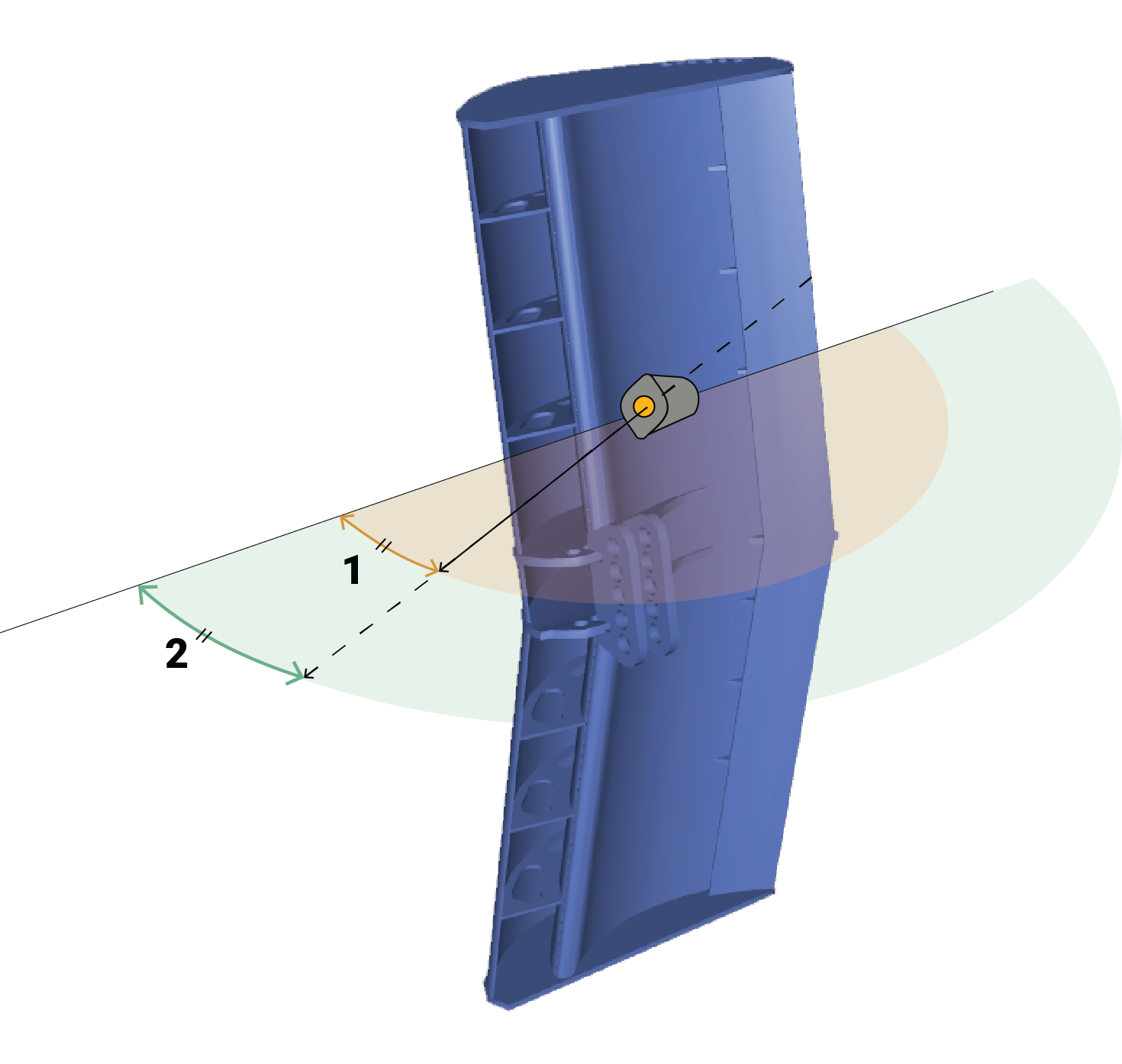 |
1. Angle of attack: 25-40° 2. Opening angle: 25-40° |
Opening and Elevation Angles for Spread Sensors
The opening and elevation angles depend on the pocket installation on the door.
The opening angle is the horizontal angle of the pocket in relation to the door. It should be between 25° and 40°. Opening angles should be in line with the angle of attack. You need to indicate the opening angle on Mosa2.
The elevation angle, or tilt angle, is the vertical angle of the pocket in relation to the door. It should be between 15° and 20°. The sensor must point toward the vessel: adjust the elevation angle based on the operational depth of the door during fishing operations.
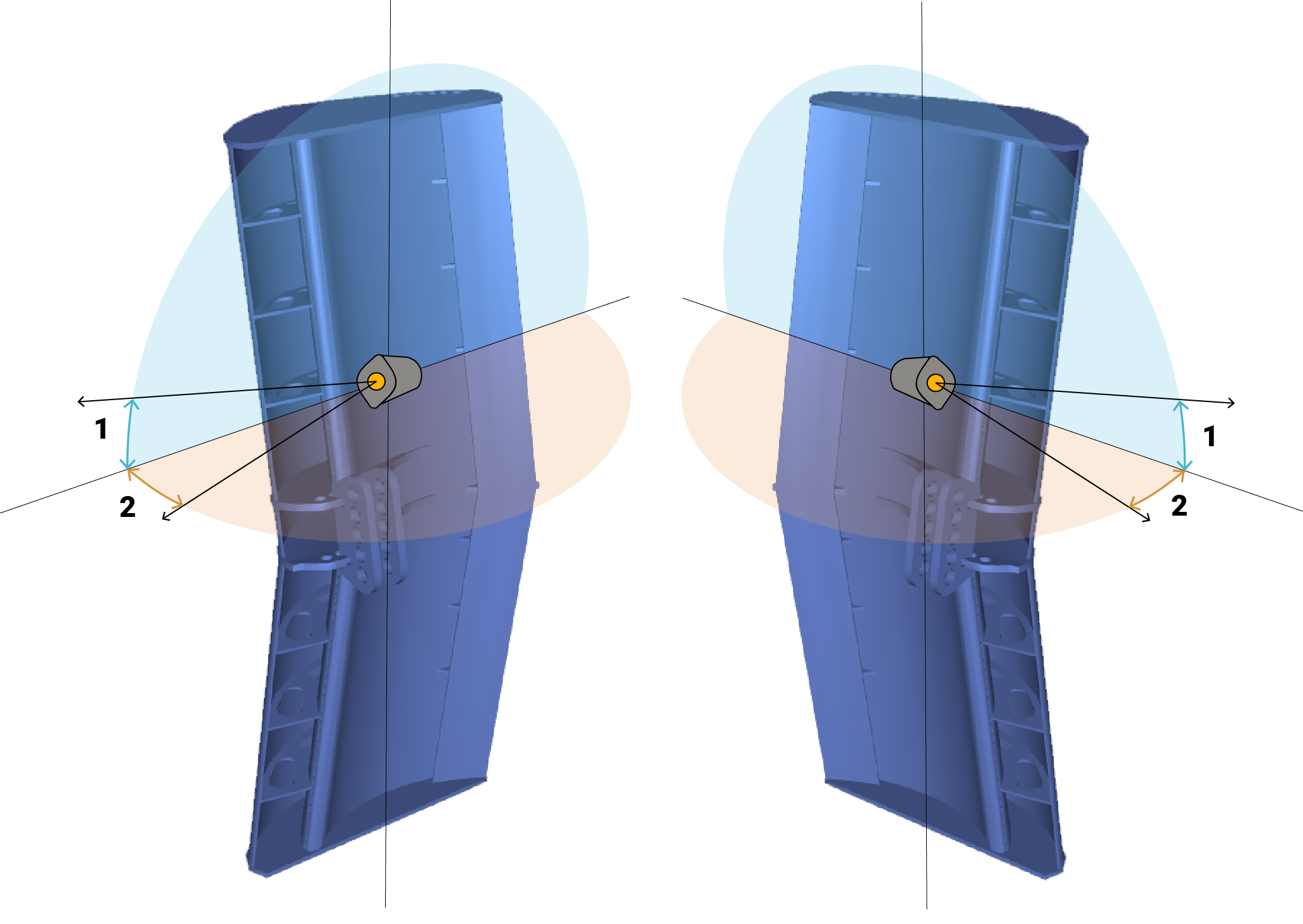 |
1. Elevation angle: 15-20° 2. Opening angle: 25-40° |
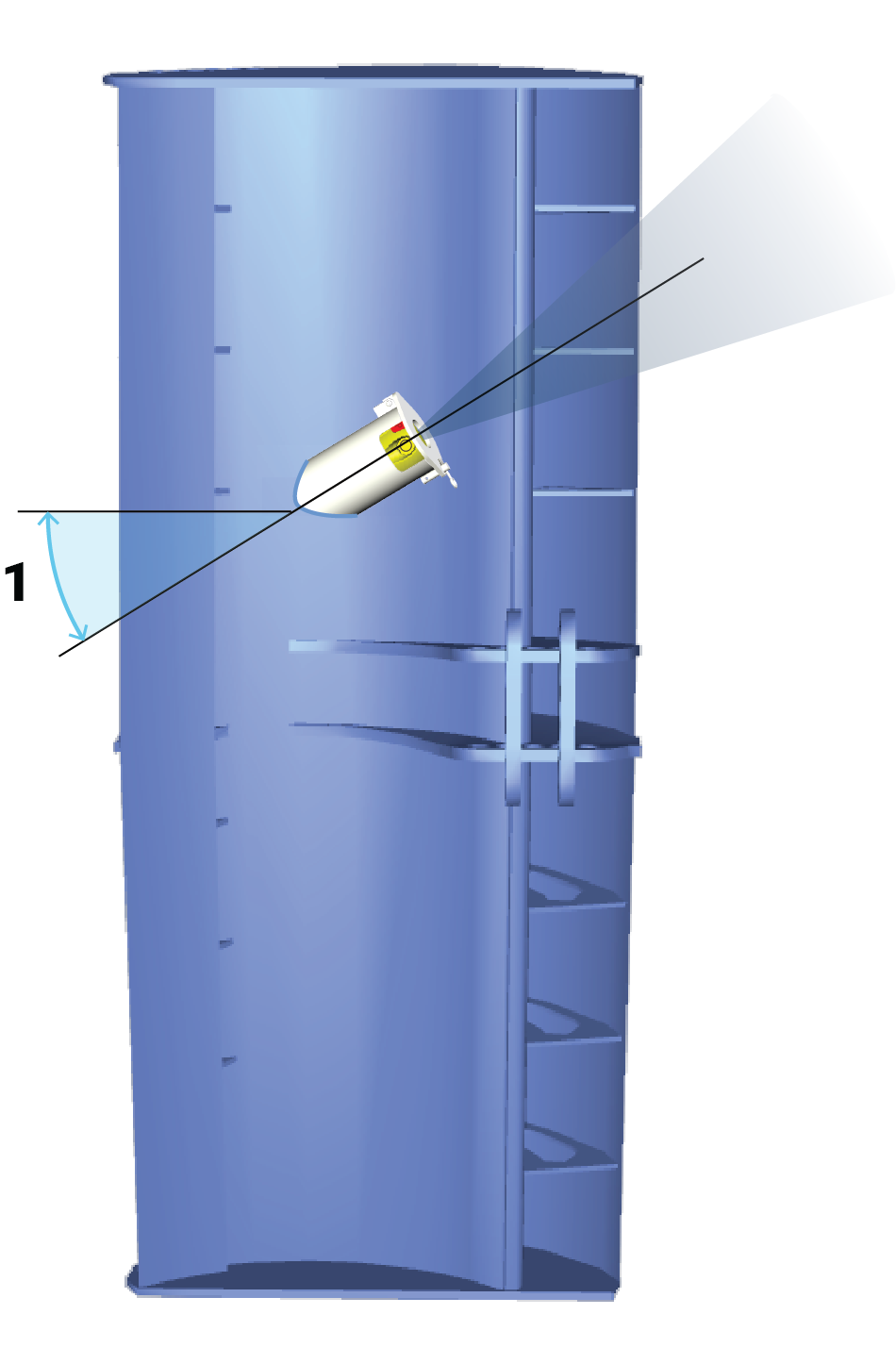 |
1. Elevation angle: 15-20° |
Roll Angles for Spread Sensors
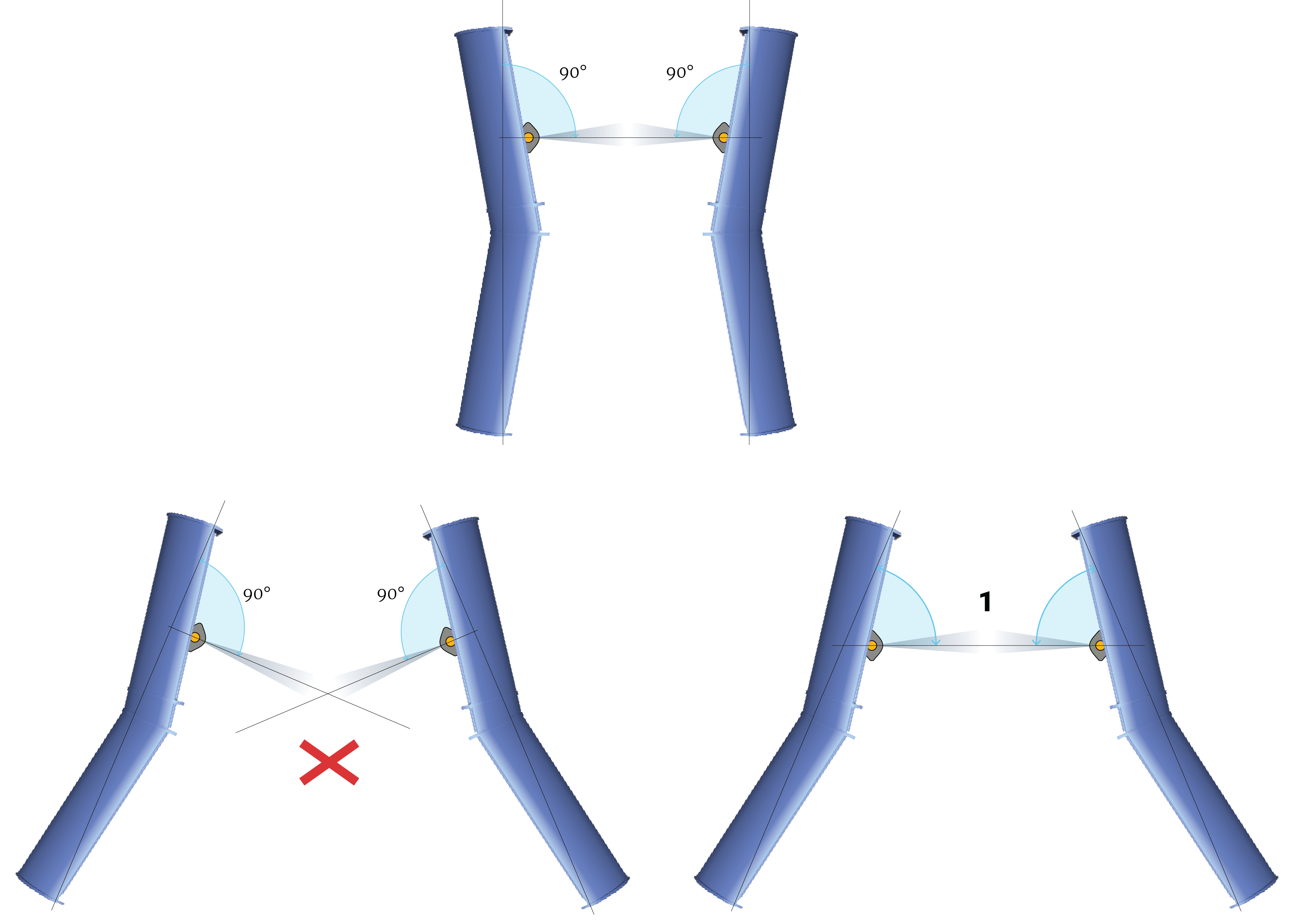
PRP Spread Sensor Communication
Spread sensors communicate with each other and with the receiver. Lines of communication between them and toward the receiver must be unobstructed.
The beamwidth toward the receiver (uplink ping) is 46° and beamwidth toward the other sensors (down ping) is 26°. This beamwidth is thinner: this is why it is important to keep sensors aligned.
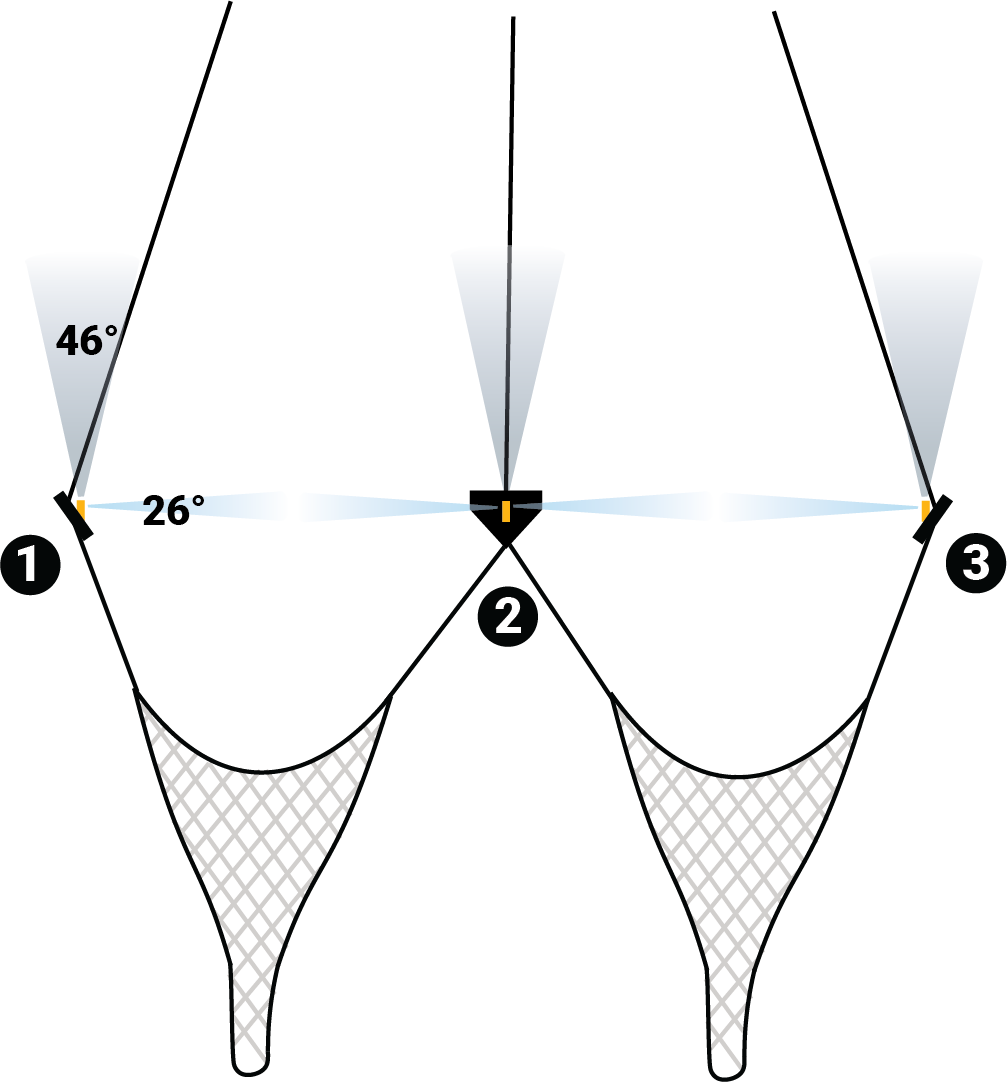 |
Communication toward receiver (46°) | |
 |
Communication between sensors (26°) | |
|
1. Master sensor 2. Clump sensor 3. Starboard sensor |
||
Door Sounder sensors do not communicate with each other, so only lines of communication toward the receiver and bottom must be unobstructed.